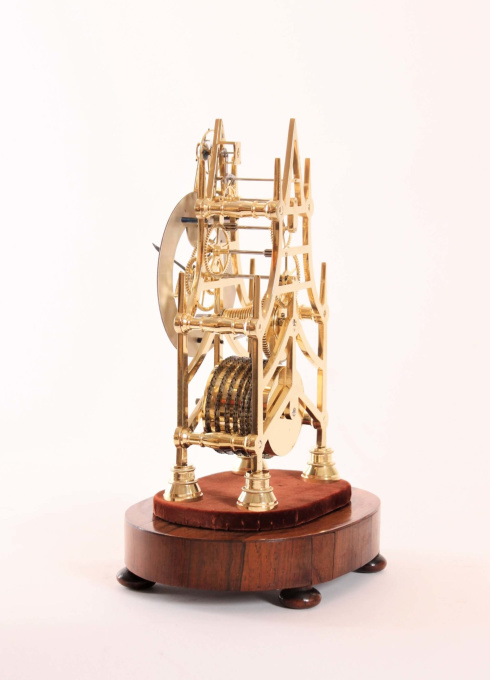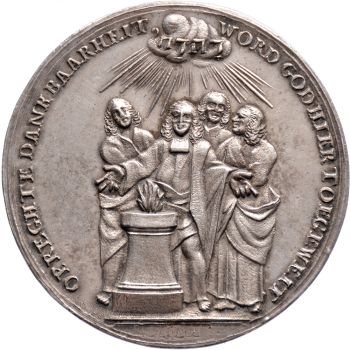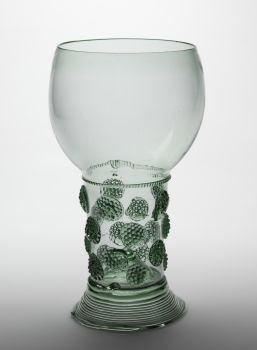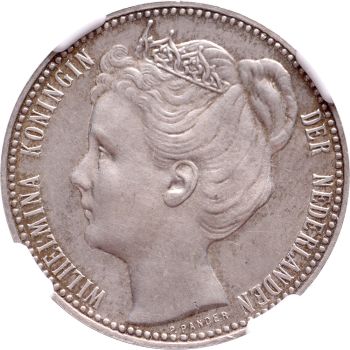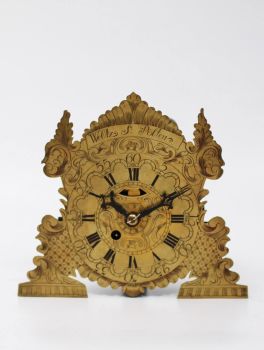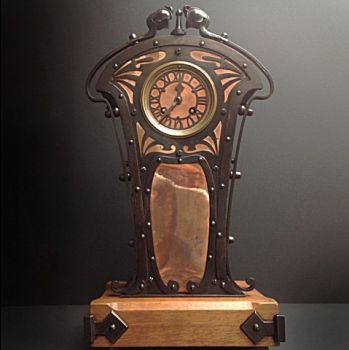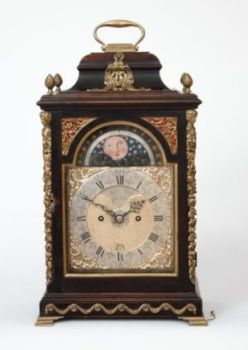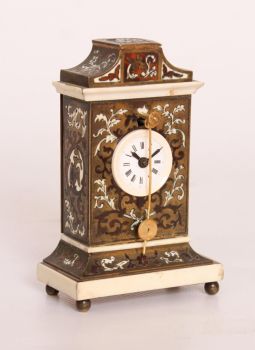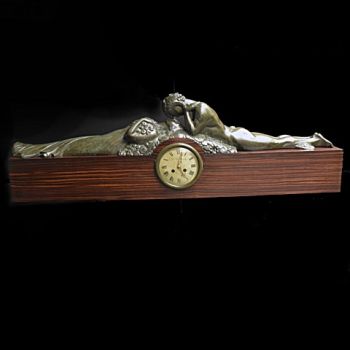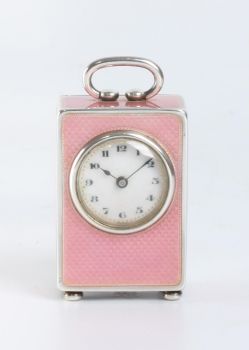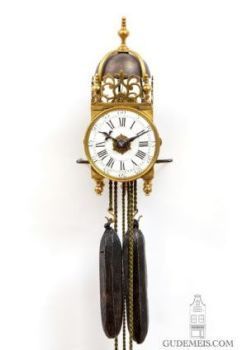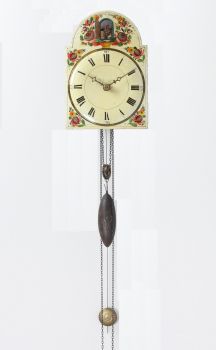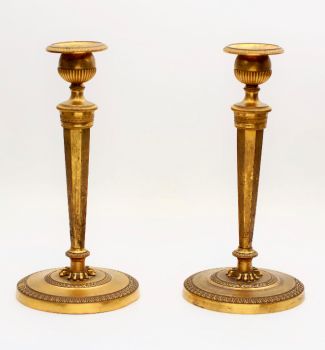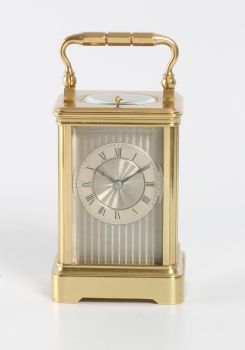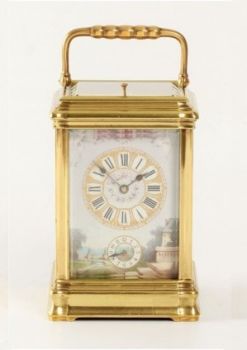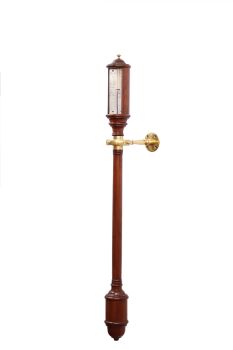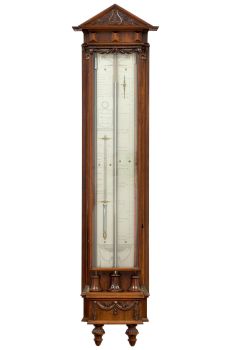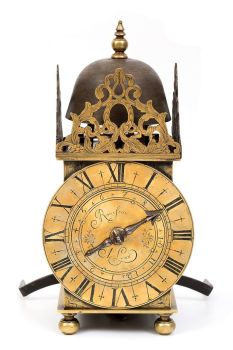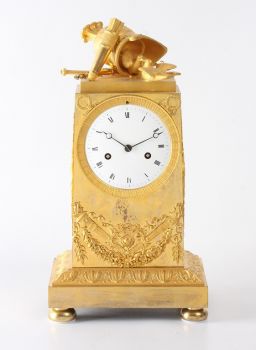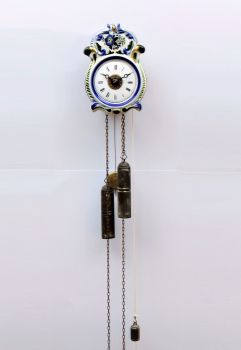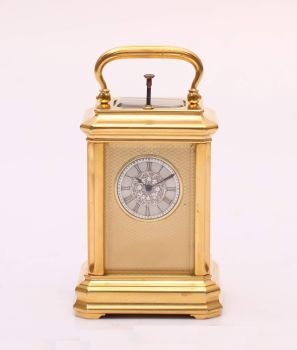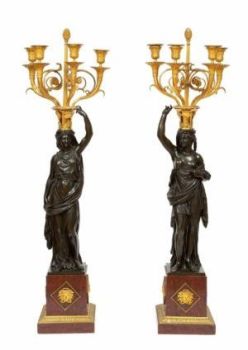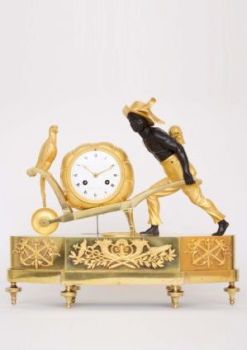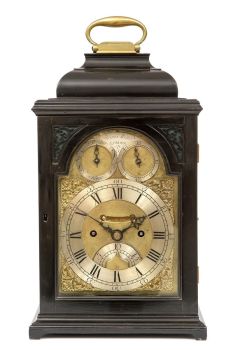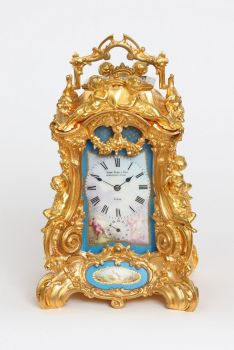A small English brass skeleton clock with balance wheel, circa 1840 1840
Unknown artist
37 ⨯ 18 ⨯ 14 cm
Currently unavailable via Gallerease
- About the artworkThe chapter ring
The 10-cm engraved silvered chapter ring has Roman numerals and a seconds subsidiary under XII. The Breguet hands are made blued steel.
The movement
The substantial skeletonized plates have Gothic pinnacles and are connected with well turned baluster pillars. The movement is driven by a spring barrel with fusee and chain. It can run eight days on a winding. It is being regulated by a plain balance in combination with an English lever escapement which is a fairly rare feature for skeleton clocks.
The case
The on Gothic architecture inspired frame is raised on four turned feet and is placed on an oval rosewood base on flat feet. The clock is covered by a glass dome. On the bottom is a hand written label inscribed; .. clock was beque(thed) to Robert Whitmore by Admiral the Hon.ble Sir Courtenay Boyle May 1844. - About the artist
It might happen that an artist or maker is unknown.
Some works are not to be determined by whom it is made or it is made by (a group of) craftsmen. Examples are statues from the Ancient Time, furniture, mirroirs, or signatures that are not clear or readible but as well some works are not signed at all.
As well you can find the following description:
•“Attributed to ….” In their opinion probably a work by the artist, at least in part
•“Studio of ….” or “Workshop of” In their opinion a work executed in the studio or workshop of the artist, possibly under his supervision
•“Circle of ….” In their opinion a work of the period of the artist showing his influence, closely associated with the artist but not necessarily his pupil
•“Style of ….” or “Follower of ….” In their opinion a work executed in the artist’s style but not necessarily by a pupil; may be contemporary or nearly contemporary
•“Manner of ….” In their opinion a work in the style of the artist but of a later date
•“After ….” In their opinion a copy (of any date) of a work of the artist
•“Signed…”, “Dated….” or “Inscribed” In their opinion the work has been signed/dated/inscribed by the artist. The addition of a question mark indicates an element of doubt
•"With signature ….”, “With date ….”, “With inscription….” or “Bears signature/date/inscription” in their opinion the signature/ date/ inscription has been added by someone other than the artist
Artwork details
Related artworks
Unknown artist
A JAPANESE MODEL OF A NORIMONO, A PALANQUIN1650 - 1700
Price on requestZebregs & Röell - Fine Art - Antiques
Unknown artist
A Surinam-themed Amsterdam long-case clock1746 - 1756
Price on requestZebregs & Röell - Fine Art - Antiques
 Curated by
Curated byGallerease Magazine
1 - 4 / 12Unknown artist
Een Gotische zuidelijke Nederlanden wandklok1580 - 1590
Price on requestNico van den Assem restauratie
Unknown artist
Set Franse Empire Pendules / Empire Lectura penduleearly 19th
Price on requestKuipers Kunst & Antiek
1 - 4 / 24


